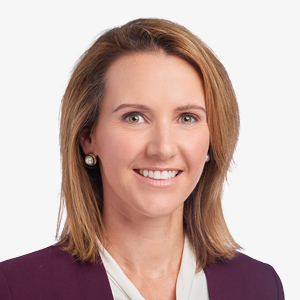Asset Allocation Committee Outlook
—Erik L. Knutzen, CFA, CAIA, Chief Investment Officer—Multi-Asset Class
Over the past three months, the Asset Allocation Committee (the “AAC”) views have coalesced around a core economic scenario of lower inflation, lower rates and positive growth—all of which we regard as supportive for risky and cyclical assets. At the same time, however, we see the risks to the core scenario becoming more pronounced, particularly over the coming months. Those risks have two key sources: the imminent turn in the monetary policy cycle and heightened political uncertainty. As we move from a regime of peak rates to one of declining rates, the risk of a policy error rises: in particular, we are concerned that the U.S. Federal Reserve (Fed) may wait too long to follow other major central banks in making its first cut. On the political side, elections in India, Mexico and South Africa have already generated meaningful localized volatility; and the quarter began with a highly consequential and surprising French election, itself called due to a hard-right surge in the vote for the European Parliament in June. Furthermore, longstanding geopolitical hotspots—Ukraine, the Middle East, the South China Sea—show little sign of cooling. With four months to go until the U.S. elections, we think political and market volatility is likely to rise in the second half of the year, with the potential to persist well into 2025. These risks prevent the AAC from taking a more overweight view on risk assets despite the supportive fundamental economic outlook, and keep us focused on quality investments and portfolio balance.
We think the fundamental economic outlook is clearer and more reassuring than it was three months ago. Recent weeks have seen significantly cooler U.S. inflation and labor market data, suggesting that the first quarter was a blip rather than something more persistent. If that raises concern about the resilience of current growth, it is worth noting that declining inflation and lower rates would be of greatest benefit to the “have nots”—whose tightening purse strings represent the biggest threat to growth. As one Committee member observed, a major risk to the economy is the recent decline of U.S. real disposable income growth from more than 5% to around 1% per annum. In other words, the big risk to the economy has not been a toss-up between sticky inflation or stalling growth, but sticky inflation leading to stalling growth. By arresting the decline in disposable real income growth, especially among lower- and middle-income groups, lower inflation and rising real wages could provide renewed support for the economy.

In our view, a period of interest rate cuts against a background of high and stable nominal growth would be a positive environment for corporate earnings. At the same time, a large amount of liquidity still sits on the sidelines, representing potential flows to support valuation multiples.
The Committee’s 12- to 18-month views remain virtually unchanged, however, as we focus on two key risks of the coming months: the imminent turn in the monetary policy cycle (and the rising risk of a policy mistake); and heightened political risk.
At the start of this year, futures markets were priced for six Fed rate cuts, the Fed itself forecast three and the AAC agreed with the Fed. Today, the Fed forecasts just one, the market is priced for two and we agree with the market. A straw poll of the Committee revealed that we see a 15 – 30% probability of a Fed policy error: waiting too long to cut and allowing high rates to bite too deeply into corporate hiring and consumer spending.
On the one hand, the distribution of the Fed’s “dot plot” suggests that two cuts remain a real possibility. It is a close call. On the other hand, market participants were surprised at the caution and hawkishness of Fed Chair Jerome Powell’s commentary following the June 12 policy decision, given the very favorable inflation data that appeared earlier in the day. After all, the European Central Bank, Canada, Sweden, Switzerland and others have already started to cut.
The Fed has become explicitly data-dependent, just as the economy turns from expansion to contraction—the time when data, and especially jobs data, are often subject to their largest revisions. History also suggests that the Fed tends to hike too far and stay high too long, and on this occasion, there is pressure not to encourage a 1970s-style second wave of inflation.
The fact that many parts of the market remain priced for perfection heightens the risk associated with this potential policy error. Rates could be cut and risky assets might still stagnate or decline if those cuts don’t meet market expectations. Sure enough, there are some early signs of markets positioning for over-tight policy, such as the deepening of yield curve inversion through May and June and a weakening of value and cyclical stocks relative to secular growth stocks.
While a major policy error is not part of our core scenario, it is an increasing risk over the coming months.
A record-breaking year for elections was always likely to be a year in which investors priced in a sizable political risk premium.
We have already seen volatility around election results in India, Mexico and South Africa, as well as the return of meaningful political risk premia in French and eurozone peripheral bond spreads. The latter appeared when President Emmanuel Macron of France dissolved the National Assembly and added yet another election to this year’s pile. That decision was itself a response to the surprising success of the populist Rassemblement National (RN) party in the French European Parliament elections.

The RN was ultimately thwarted by an unwieldy pact between centrists and the left. That result may be second in consequence only to that of the U.S. elections in November, in which two presidential candidates with very different programs will face a vote that remains too close to call, in a country where important policies are increasingly enacted by the executive to bypass a gridlocked Congress.
Record-high levels for the S&P 500 Index and relatively low volatility suggest that investors have yet to price for what we believe will be a very close race. That fits with history, however. Volatility has tended to spike and the market has tended to sell off in the run-up to close elections, but not until after the summer.


Markets have tended to rally once the result is known, but that does not always mean the Wednesday morning after the vote. When the Supreme Court had to rule on the outcome of the 2000 election, volatility and risk aversion persisted until the decision on December 12. A scenario in which one or other candidate challenges this year’s result—with the dispute potentially overlapping with Donald Trump’s appeals against his recent convictions—could be a recipe for high political, social and market volatility.
Continuing the theme from last quarter, our equity market view favors quality (to reflect our near-term outlook for rising volatility), but in more cyclical and less expensive parts of the market (to reflect our caution on secular-growth stock valuations, our more positive longer-term outlook for the economy and our anticipation of a broadening of market performance).
As such, the AAC ranks more cyclical ex-U.S. markets as highly as U.S. large caps (see “Up for Debate: Outside of the U.S., Do We Prefer Europe or Japan?”) and tilts toward value over growth.
Our only overweight view remains U.S. small and mid caps, with the critical caveat that we prioritize high quality in a universe that is overpopulated with loss-making companies. Some Committee members warned of limited upside in the near term, given the exposure to high rates among smaller companies. Strip out the negative earners, however, and we think this segment of the market represents a very attractive relative-value opportunity for the longer term.


The recent easing of the inflation logjam, and the Committee’s growing confidence that the Fed will deliver six rate cuts by the end of 2025, is the most important development in our fixed income views since last quarter.
The effect is marginal, however. We still favor the belly of yield curves, between two and seven years. Significant uncertainty about the term premium still leaves us cautious about the long end of the curve, based on our longer-term outlook for inflation and our concerns about public debt sustainability.
An economic slowdown and an associated meaningful widening of credit spreads could change our view on longer-dated bonds, but that is not our core outlook. This benign credit outlook is why we remain at-target in our view on high yield, with a preference for higher quality, and overweight in our view on investment grade, particularly those parts of the structured credit markets where high quality remains available at attractive spreads.
In alternatives, we maintain an overweight view on commodities in recognition of ongoing inflation and geopolitical risks, supply-and-demand imbalances in key areas such as energy and industrial metals, and seasonal support from summer travel and hurricane risk (see “Up for Debate: What Is the Role of Commodities in a Portfolio?”). We are cautious on core private real estate, where we see potential for further repricing. This is offset by what we see as abundant market-dislocation opportunities in the value-add and opportunistic sectors, and particularly in real estate secondaries.
We continue to see opportunity to supply capital and liquidity at attractive valuations in private equity secondaries and co-investments. Much of this opportunity set has arisen from the lack of exits and new dealmaking in private equity over the past few years, however, and we are seeing rising pressure on General Partners to start recycling portfolios.
The normalizing economic and market backdrop that informs the AAC’s broader outlook also offers more fertile ground for private markets transactions. Banks are returning to the syndicated corporate lending market—not at volumes high enough to threaten our overweight view on private debt, but high enough to make credit more accessible and attractive to dealmakers. We are still not sure whether we will see a substantial pick-up in activity this year or early next—the U.S. election could be a delaying factor—but we are confident that it is coming and this, in our view, is raising the favorability of primary private equity buyout commitments.
What is the Role of Commodities in a Portfolio?
We believe part of the case for including commodities in a strategic asset allocation rests on structural supply-and-demand imbalances that will take a long time to resolve. Decarbonization of the global economy will require increased supply of metals; deglobalization pressures are likely to raise the tendency for national hoarding of critical commodities; and investment in extraction and production has lagged far behind what would be needed to satisfy these trends.
In our view, the other part of the case rests on commodities’ portfolio diversification benefits. In particular, commodities tend to deliver positive returns during spikes in inflation or geopolitical tension, when equities and bonds often struggle.
Given these reasons for the AAC’s strategic view on the asset class, what determines whether our view is underweight, overweight or at-target?
Often, that view reflects supply-and-demand imbalances that appear over shorter time horizons than the decarbonization and deglobalization megacycles. Have we identified a looming glut or shortfall, or a mispricing opportunity?
Because of the importance of commodities as a diversifier, however, sometimes our outlook will reflect the AAC’s shifting view on risk management. Are we entering an environment in which diversification could become more important? Do we anticipate an increase in the risks that commodities have tended to hedge against?
Since the onset of the Covid-19 pandemic, the AAC has dynamically adjusted its view on commodities, primarily in pursuit of risk management. At target in commodities when the pandemic hit, we upgraded our view to overweight in the fourth quarter of 2020, anticipating growing inflationary pressures. The Bloomberg Commodity Index subsequently doubled in price. By the time the Committee moved its view back to neutral, in the third quarter of 2023, the Index had declined from its peak by 18%. Retaining an overweight view past the peak in prices was more of a risk-management than a return-seeking decision: the dramatic run-up to this point could easily have been the beginning of a surge in prices running out of control—it was at this point that we perceived the highest risk. Equity markets were already tumbling as bond yields climbed, but bond yields were still too low to provide useful diversification in the event of an inflation spiral. Commodities were, in our view, the natural hedge.
This quarter, we retain the overweight view implemented at the start of the year and, as always, the AAC debated how much of this view was attributable to our structural view on supply and demand, our perception of near-term and seasonal supply-and-demand imbalances, and our desire to diversify and hedge against inflation, geopolitical and other risks. Six months ago, it was chiefly about broad inflation risk—we anticipated the stickiness in U.S. inflation data in the first quarter, and commodities are up around 3%, year-to-date, with gold and oil up around 15%. Today, the emphasis is more specific, focused on the potential volatility of the critical summer season for gasoline and agricultural products, and particularly the upside risks to natural gas and heating oil associated with what is forecast to be a stormy hurricane season.
Outside of the U.S., Do We Prefer Europe or Japan?
In its search for balance in its views, and in recognition of its constructive six- to 18-month economic outlook, the AAC favors higher-quality segments of more cyclical markets. Cyclical markets include U.S. small and mid caps, but also developed non-U.S. equities. But when we’re looking outside the U.S., do we prefer Europe or Japan?
The AAC has tended to be more cautious on Europe over recent quarters, seeing low valuations justified by weakness in its core economies. Some of that pessimism is lifting as we begin to see signs of recovery, and particularly a rebound in manufacturing both here and in other cyclical parts of the global economy. That has led us to upgrade our view to at-target. The coming months will determine whether a persistent rise in the European political risk premium prevents us from taking the next step to overweight.
The AAC has long favored Japan. Over the medium term, we believe attractive valuations, improving corporate governance, the weak yen, the return of inflation and stronger nominal growth, and an end to years of underallocation all provide support.
On a nearer-term view, however, there is some risk attached to a rollover of several consumer subsidies coinciding with rising prices, and to policy tightening at the Bank of Japan coinciding with a potential slowdown in the U.S. Following a rapid climb, the equity market stalled through the second quarter, perhaps reflecting profit-taking and a temporary shortage of marginal buyers, but a recent resumption of the upward move may signal that this pause is already over.
All in all, the positive momentum in our views is with Europe, but Japan is more likely to continue to be the AAC’s structural overweight view.


Investment Grade Fixed Income
We continue to favor the short and intermediate parts of the yield curve in anticipation of declining cash rates, but remain cautious on longer-dated bonds given debt sustainability concerns.
Corporate spreads are now quite tight, and we see the most attractive opportunities in mortgages and securitized credit.
Non-U.S. Developed Market Bonds
Yields are relatively attractive, especially in the two- to seven-year part of the curve, but heightened political risk in Europe, caution on Japanese government bonds, and on longer-dated bonds in general, inform against moving to a more positive view.
High Yield Corporates
Our outlook for credit stresses remains mild and idiosyncratic rather than systemic, and we see a case for shorter-duration, high-quality exposure.
That said, we think investors buying yield have kept spreads tighter, in many cases, than fundamentals warrant.
Emerging Markets Debt
Valuations remain relatively high although the potential for U.S. dollar weakness later in the year may enhance our outlook.


U.S. Equities
We anticipate further broadening of equity-market performance, which leads us to continue to favor higher quality small and medium-sized companies.
Heightened monetary policy and political risk in the second half of the year prevents an upgrade to overweight.
Non-U.S. Developed Market Equities
We believe Japanese equities have structural support, and that an incipient rebound in manufacturing and other cyclical parts of the global economy could begin to favor Europe over the coming months.
The AAC upgraded European equities from underweight to neutral, but political risk currently prevents an upgrade to overweight.
Emerging Markets Equities
A cautious outlook on China is balanced by a more favorable view on other emerging markets, including India, where strong growth should remain a tailwind.

 Commodities
Commodities
While not as cheap as they were three months ago, commodities remain a useful hedge against inflation spikes, upside growth surprises and geopolitical shocks in 2024.
Hedged Strategies
We currently prefer broad market exposure to hedged strategies, and also see fewer clear signals in the trending and macro environment.
Private Equity
Secondaries and co-investments are attractive as both Limited Partners and General Partners seek liquidity options to complete deals and increase distributions.
Primary buyouts are beginning to look more attractive as policy rates peak and deal activity looks set to pick up.
Private Debt
While signs of a re-opening in the syndicated loan market point to a potential rise in competition for deals over the coming quarters, yields remain attractive and we see ample deal flow.
Real Estate
Higher interest rates and uncertainty about the office sector is creating value opportunities for liquidity providers in public REITs and private real estate secondaries, and there may be value to come in primary private markets.
More structurally, we believe post-pandemic growth dynamics will continue to support key sectors such as data centers, warehouses, industrial and multifamily residential.
Currencies
USD
The dollar remains one of the highest yielding major currencies and the Fed’s relatively hawkish response to recent, softer inflation data, together with heightened political risk in Europe, could provide near-term support.
EUR
The euro remains undervalued based on interest rate differentials and expected growth rates, particularly against other European currencies, but heightened political risk could weigh on the currency in the near term.
JPY
The central bank appears unwilling to act aggressively, but the JPY is now very undervalued and, as global yields decline, the downward trend could reverse, potentially sharply.
GBP
Despite being undervalued and supported by recent economic data coming in better than expected, the GBP can still be weighed down by concerns over the U.K.’s growth and productivity; the Labour party victory in July’s general election was widely anticipated and already in the price.
CHF
The CHF is still very overvalued, and as inflation pressures subside, the Swiss National Bank is likely to withdraw support for the currency, allowing some of this overvaluation to correct; but it is also the currency most sensitive to heightened sovereign and political risk in the eurozone, and that is likely to offset its tailwinds in the near term.














